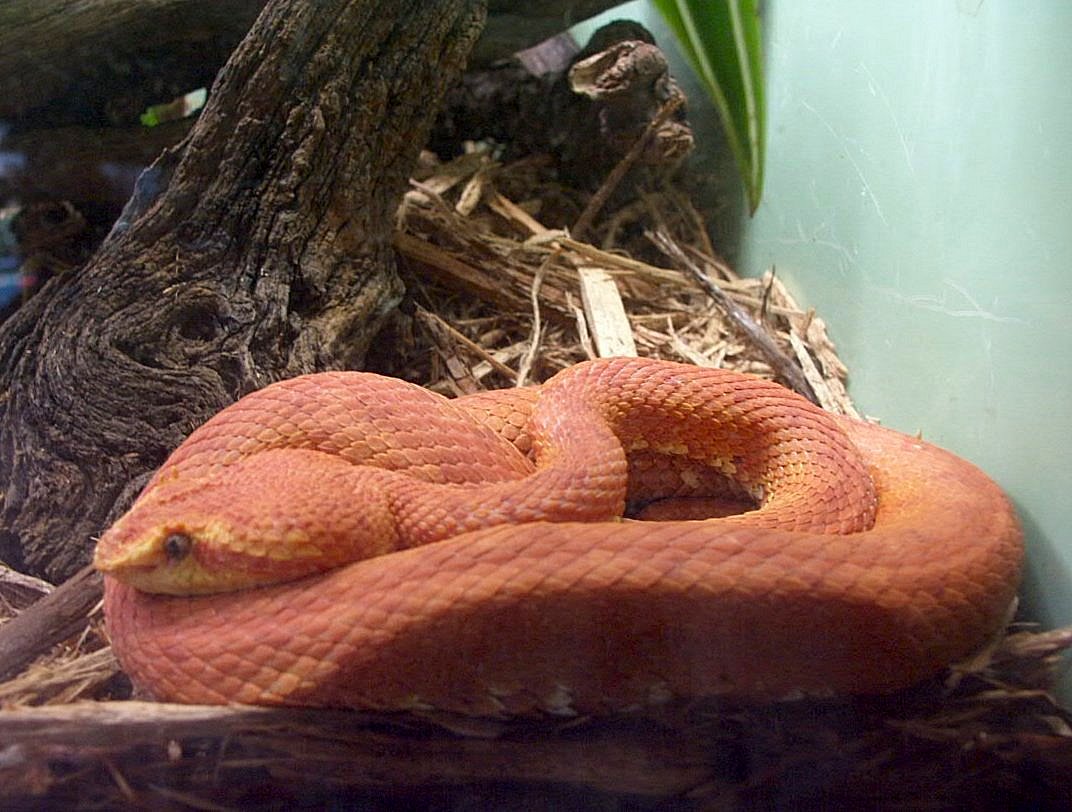General information:
 The
eyelash viper is a nocturnal, arboreal animal. This means that it
does most of its hunting from late evening through early morning,
and more than likely in, from, or around trees. When subduing its
prey, the snake grabs it and holds on while it injects a hemotoxic
venom. The snake holds on until the animal is dead and then proceeds
to swallow it by "walking" it down the throat by moving one side of
its jaw at a time.
The
eyelash viper is a nocturnal, arboreal animal. This means that it
does most of its hunting from late evening through early morning,
and more than likely in, from, or around trees. When subduing its
prey, the snake grabs it and holds on while it injects a hemotoxic
venom. The snake holds on until the animal is dead and then proceeds
to swallow it by "walking" it down the throat by moving one side of
its jaw at a time.
Eyelast vipers are usually not known to
be an aggressive snake, however it strikes instantly if anyone brushes
against it. Vipers are also one of the most dangerous of the poisonous
snakes on Central America. Their venom affects the central nervous
system of their victim as well as the cardiovascular system. With
small animals the venom can kill within minutes, but larger animals rarely
succumb unless the viper manages to inject a large amount of venom into
the victim.
Because the viper is arboreal, most bites
to humans are to hands, fingers and occasionally to the face. They
usually result in lots of pain, swelling, bleb formation, bruising and
sometimes necrosis, that may lead to contraction or even amputation.
The most common effects that happen from the venom are vomiting, diarrhea,
prostration, or sometimes loss of conciousness. There are sometimes
very severe cases that lead to death, mainly to crop farmers and plantation
workers.
Oh, a word of warning, sometimes vipers get
accidently shipped overseas in banana shipments, so be careful if you have
to open any up.
Vipers use their sense of smell to find mates.
The males go through an amazing thing called "the dance of the adders"
when they are competing for the same female. They face each
other with the head and the forepart of the body held erect, while trying
to puch the other to the ground. This sometimes can go on for hours.
The ironic thing is that during this competing there is no biting from
either contestant.
Vipers bear litters of 6 to 20 live young that range
in length from 5 to 8 inches. The young look exactly like the adult
except they are smaller.